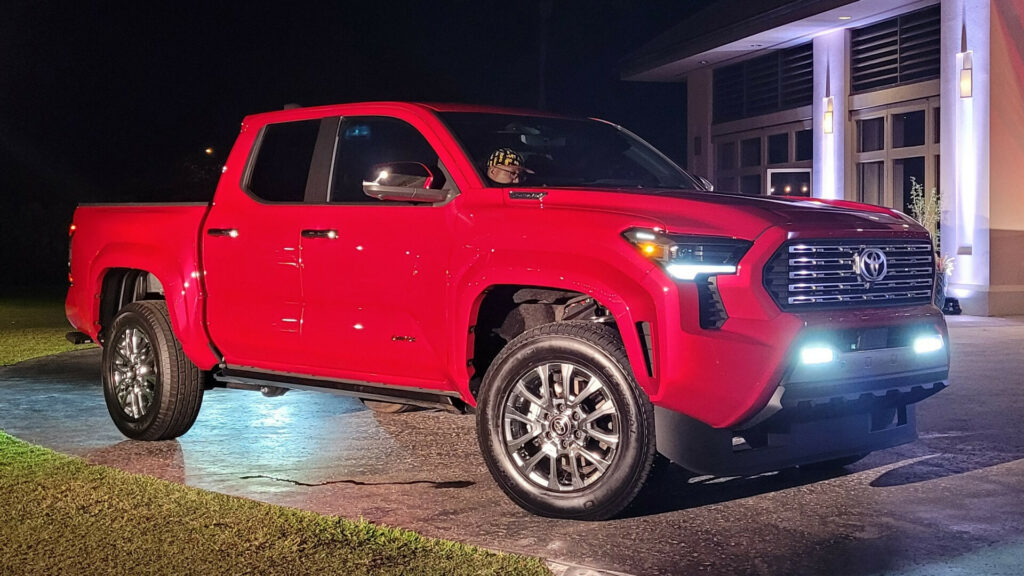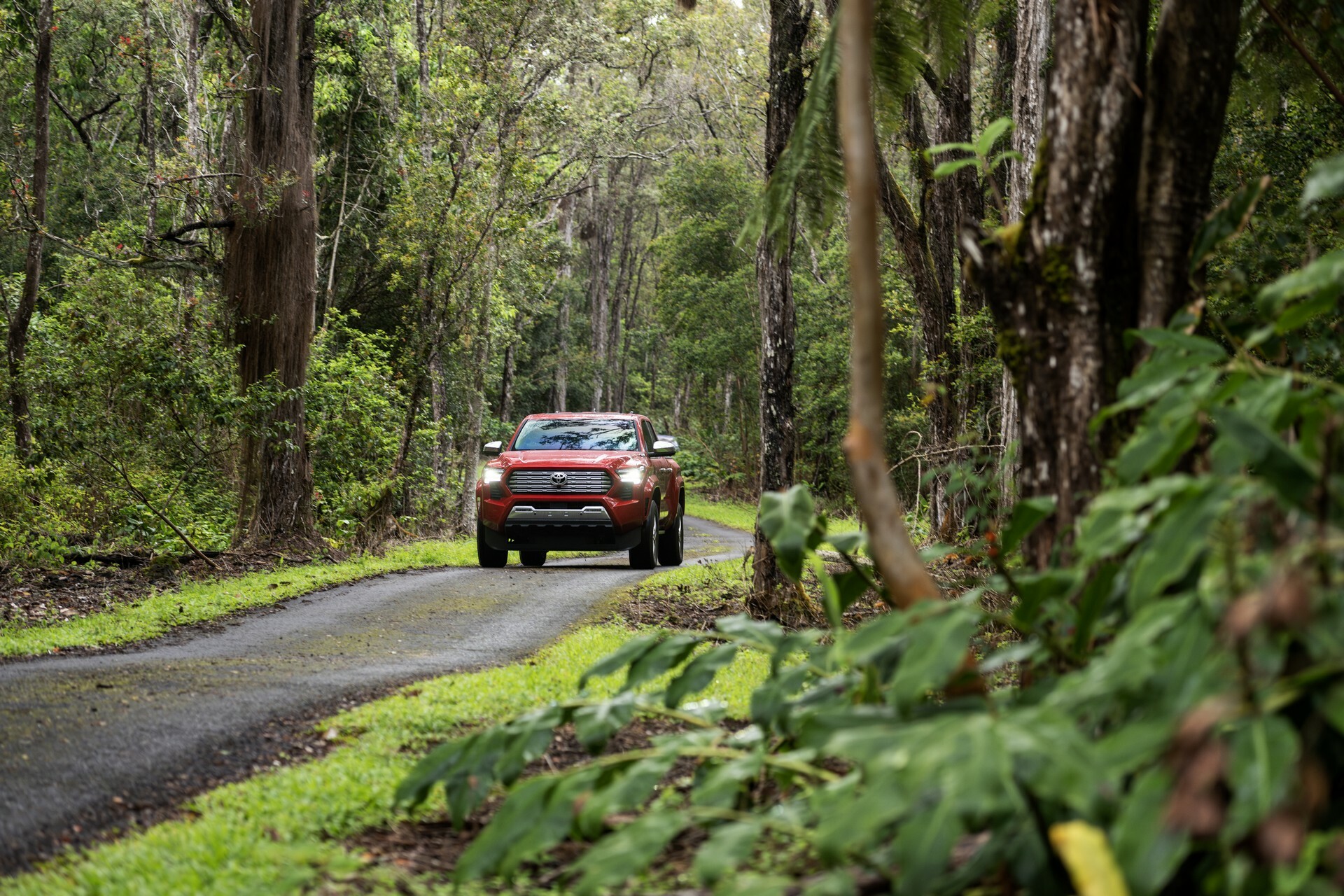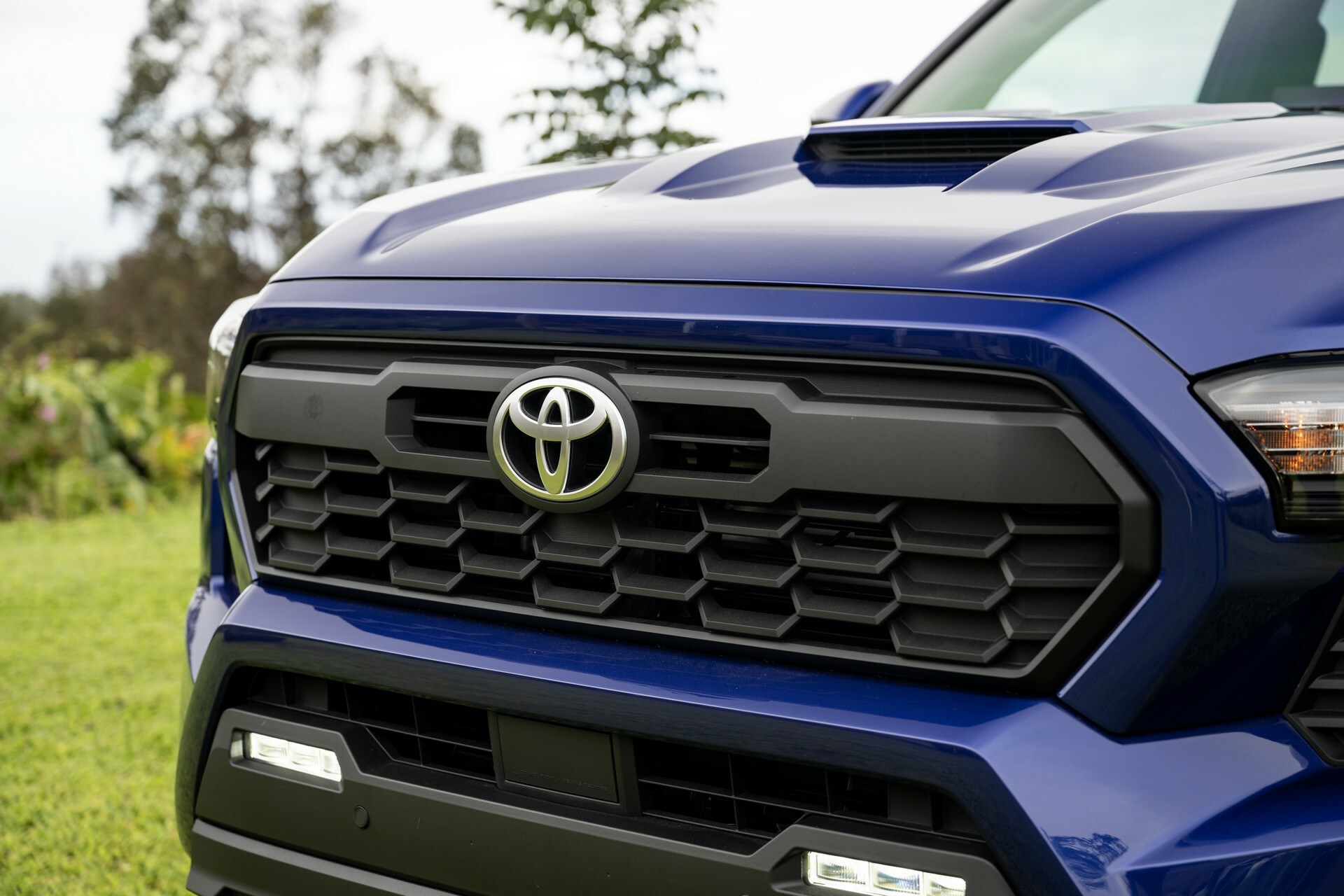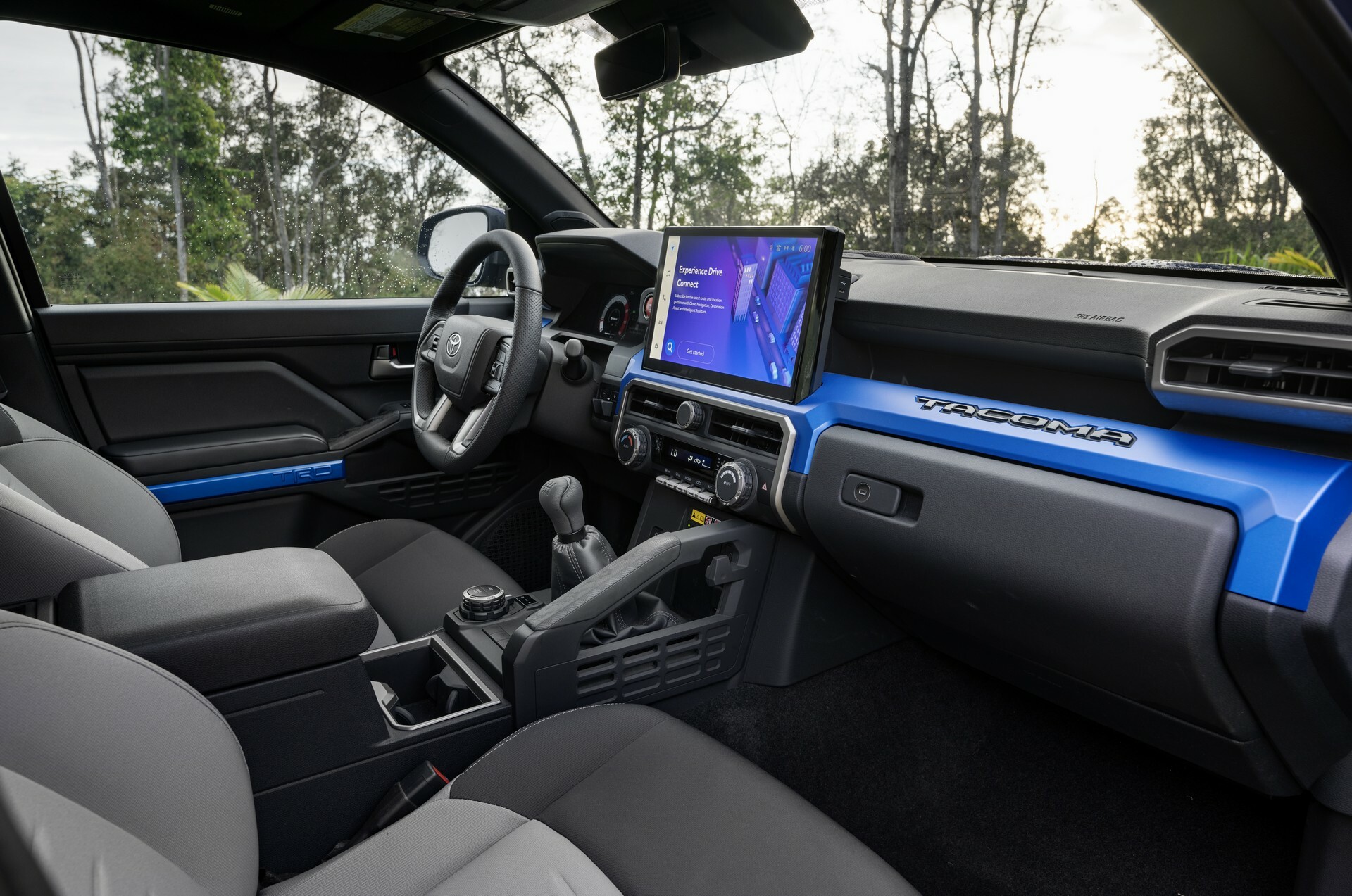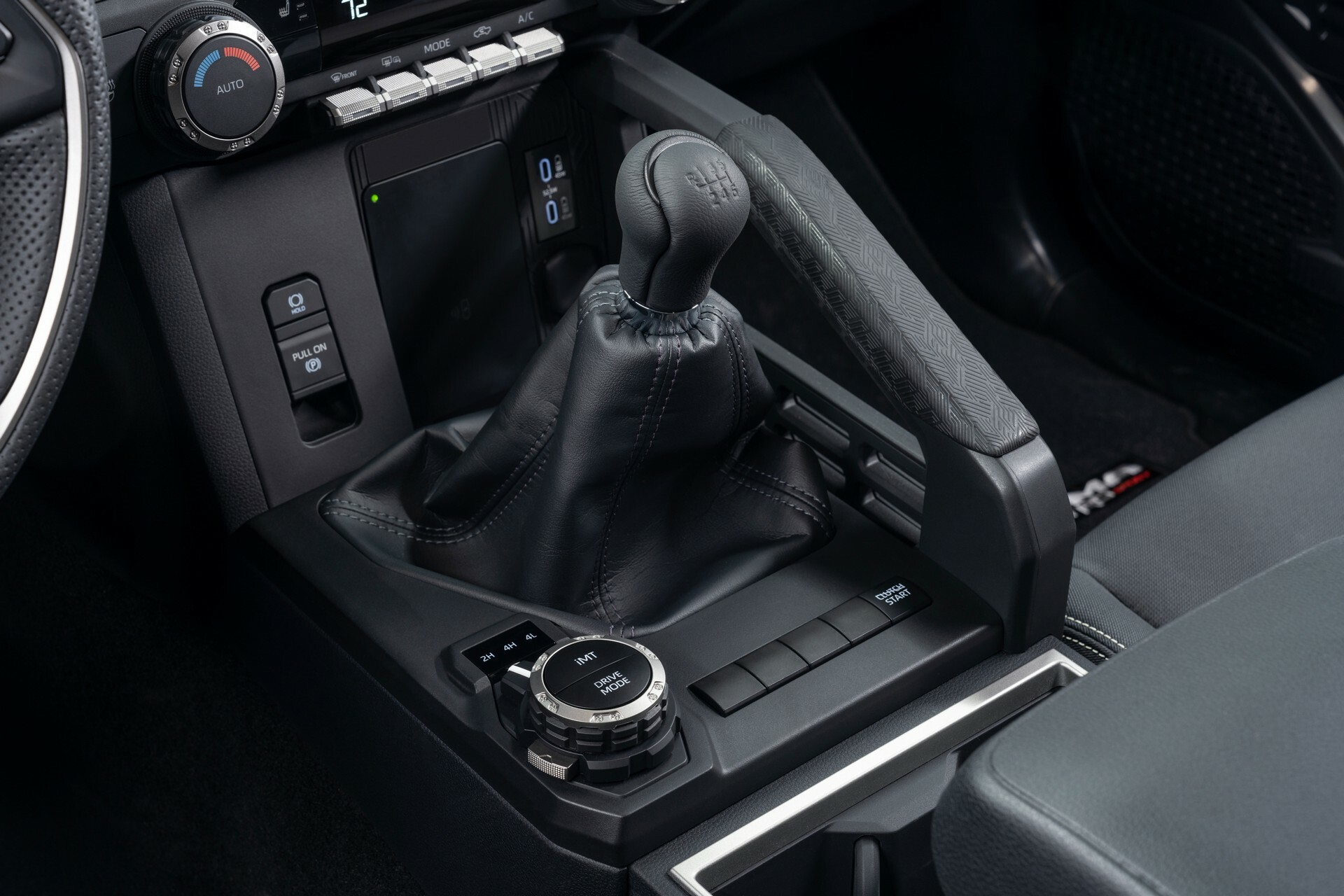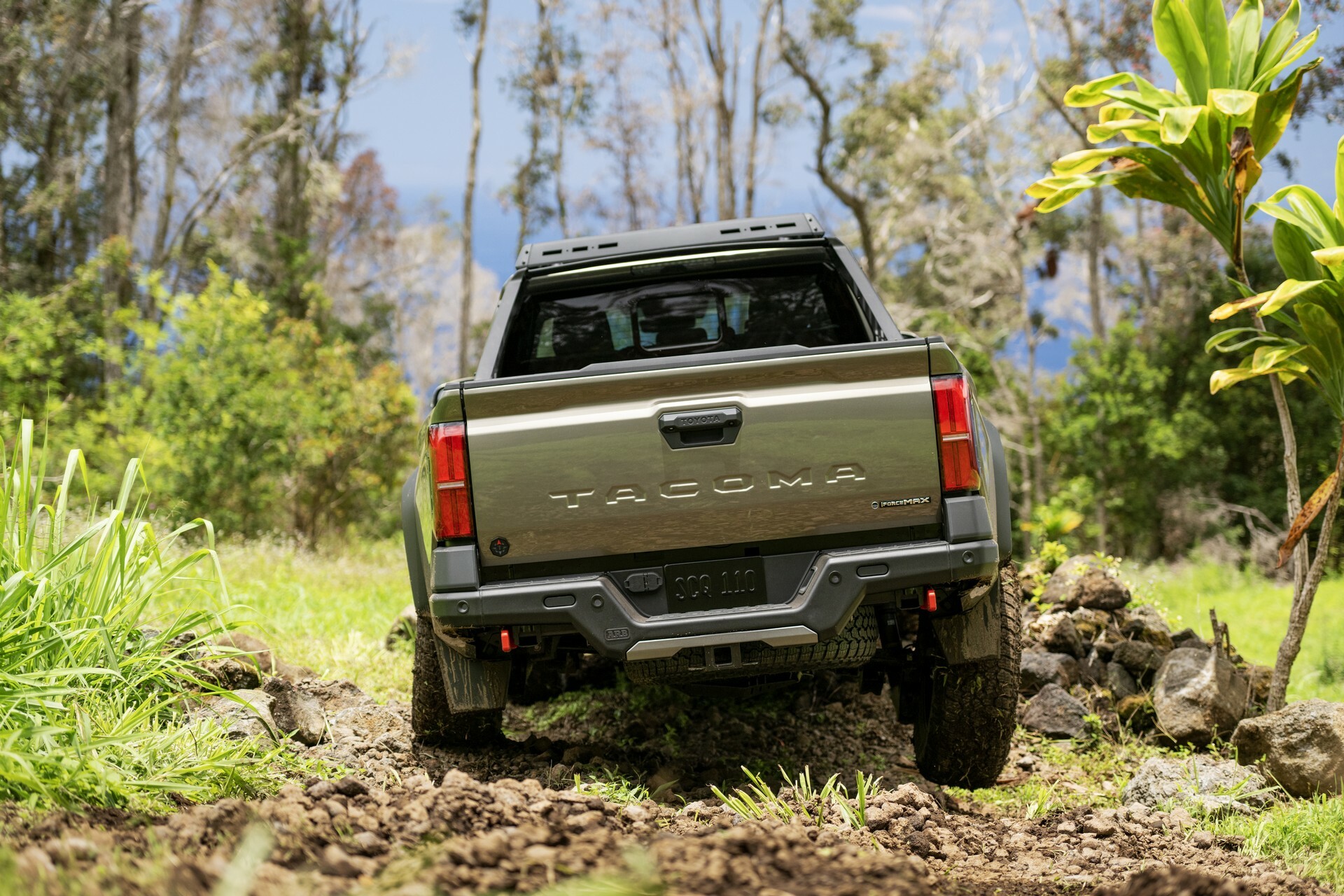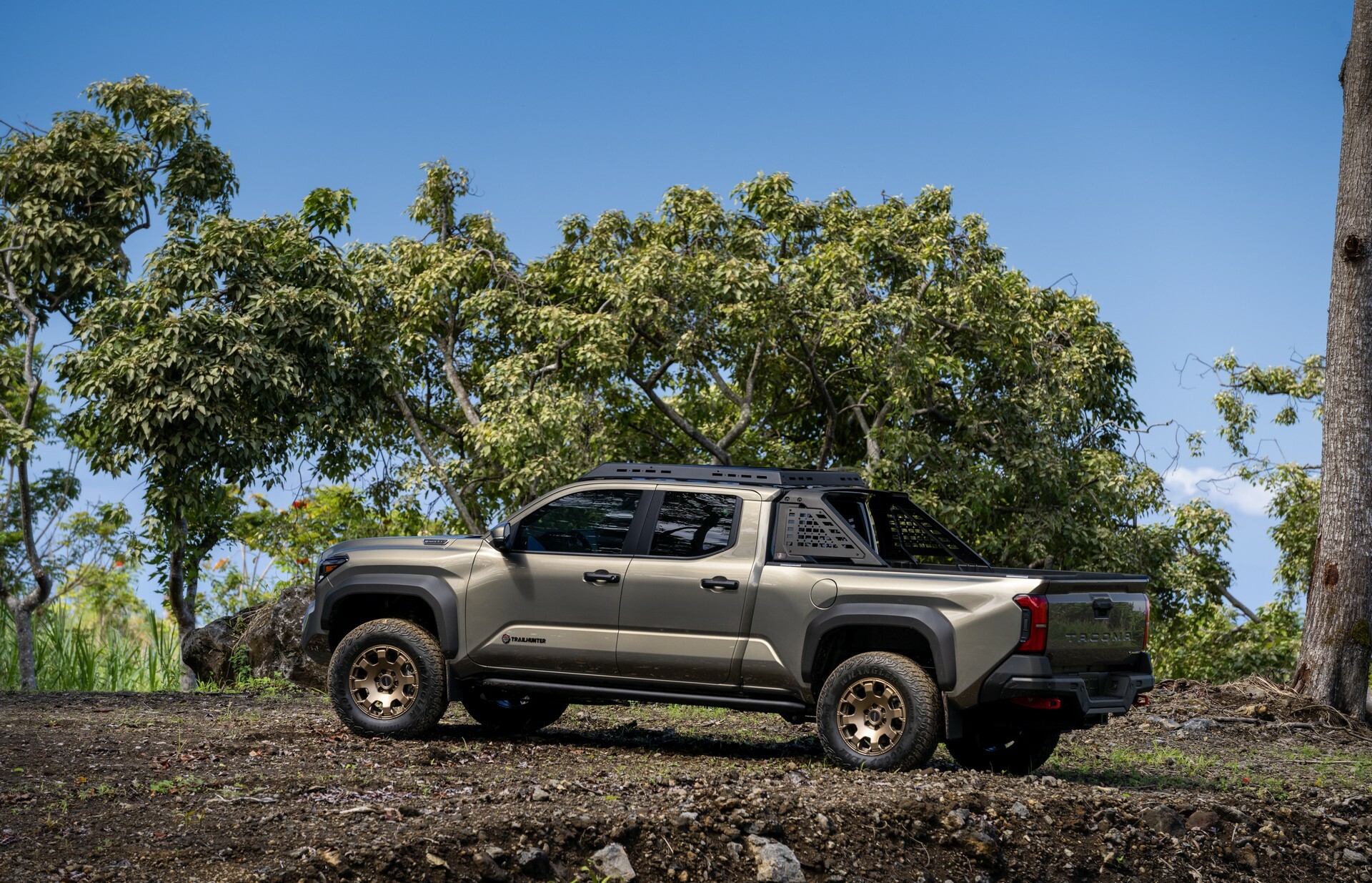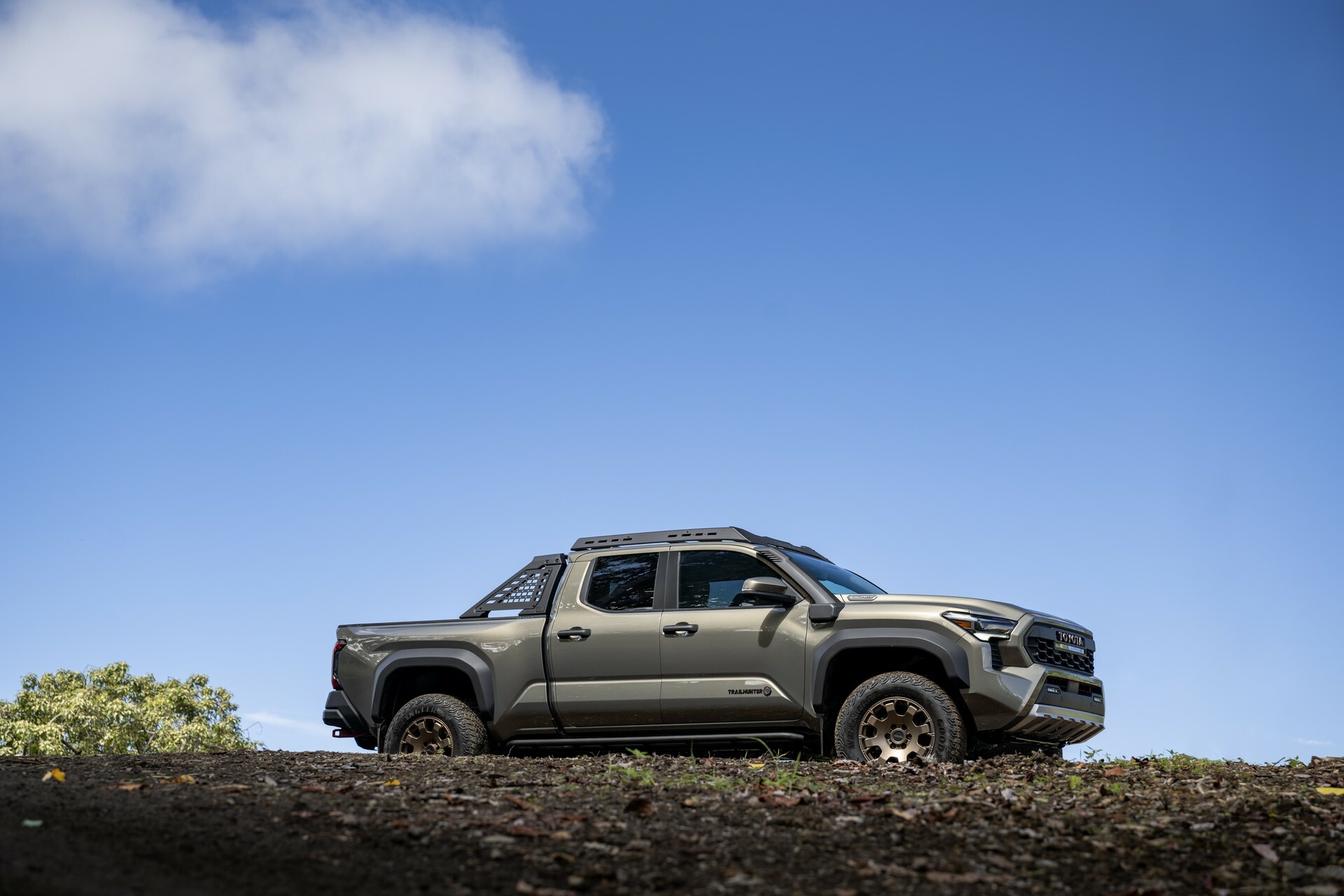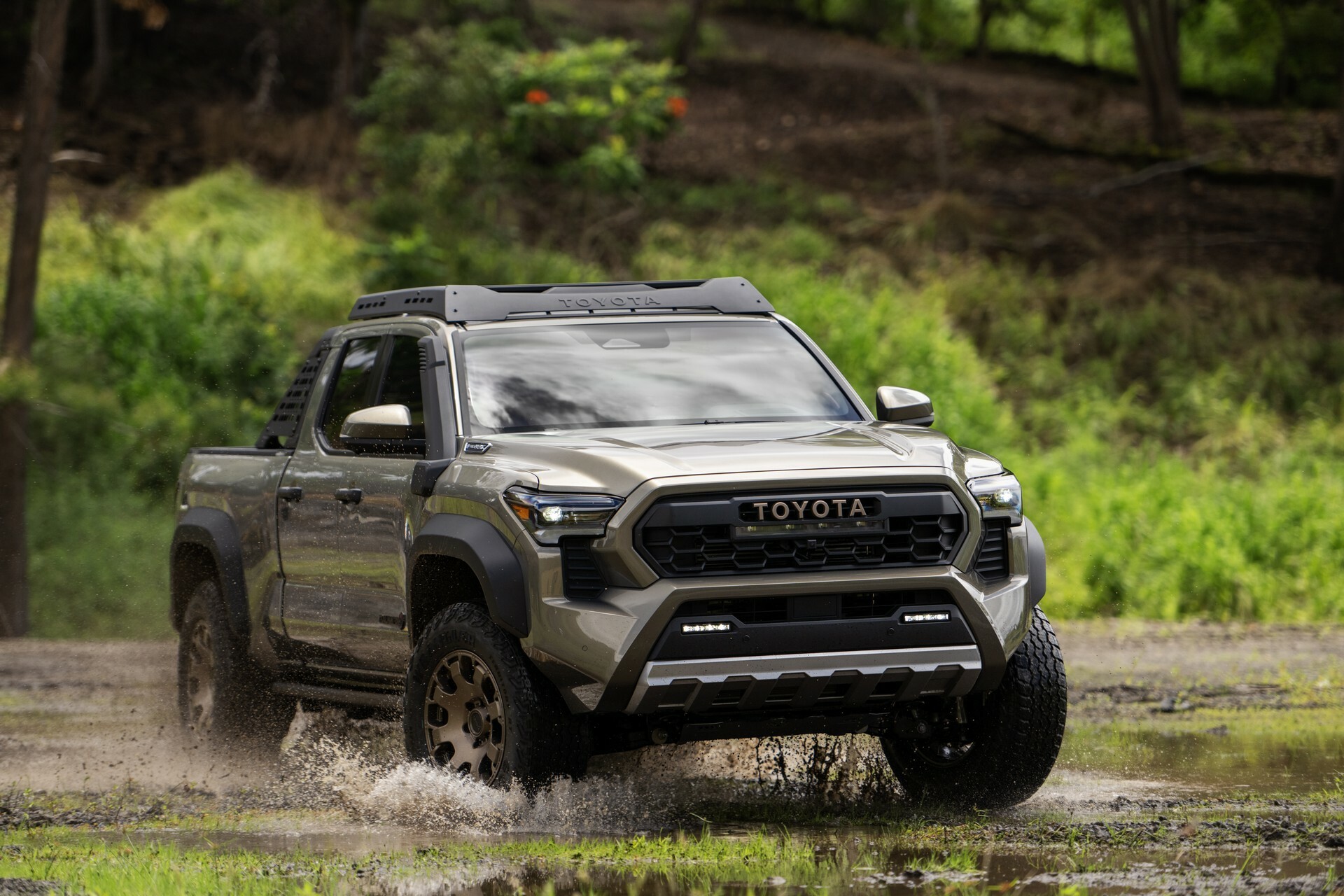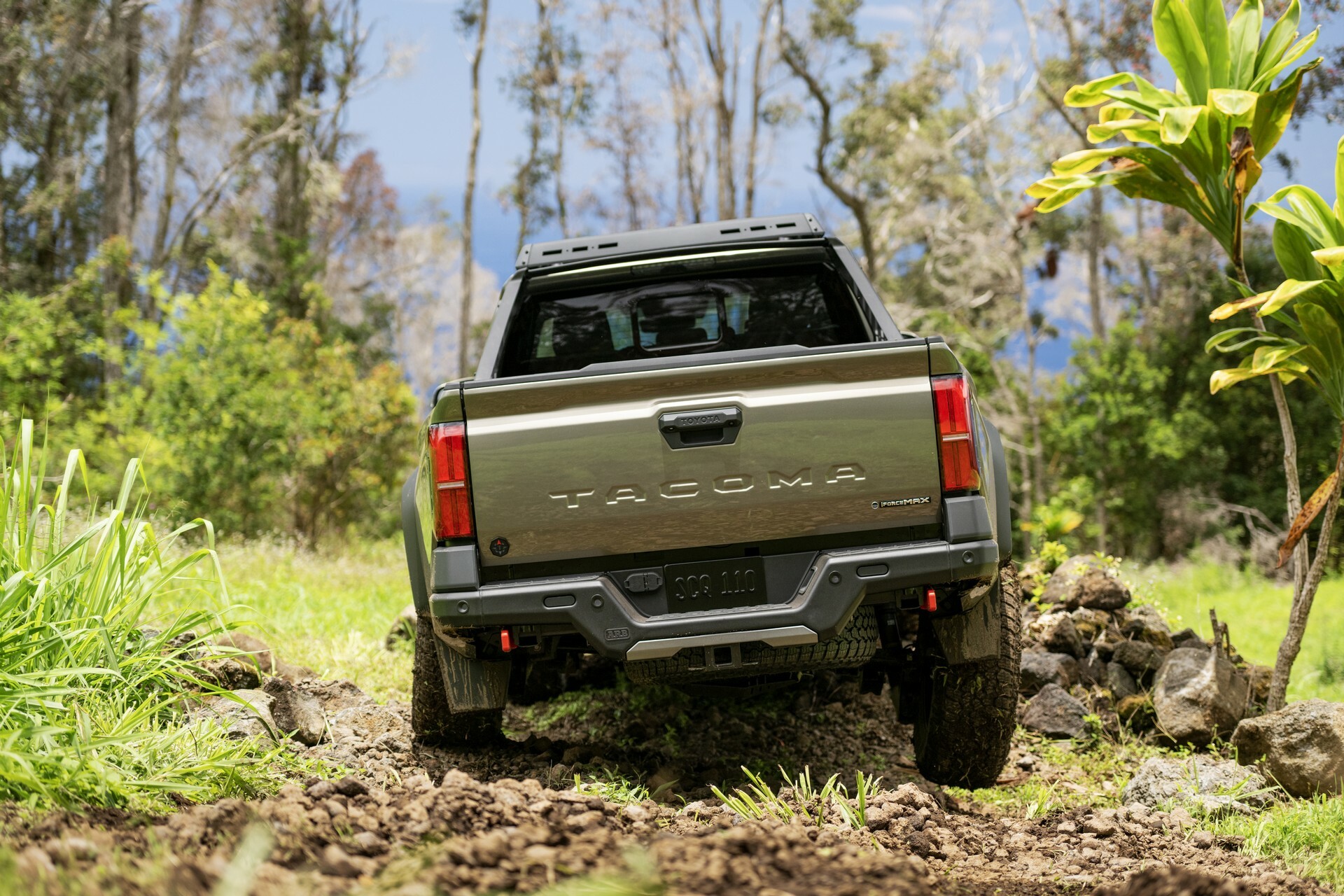Toyota is the undisputed champion in the mid-size truck segment, much to the chagrin of Ford and General Motors. It’s an unlikely upset given Detroit’s dominance in the full-size segment, but the Tacoma outsold the Chevrolet Colorado by more than 2:1 last year and it trounced the Ranger by more than 150,000 units.
So how does Toyota plan to keep the ‘taco truck’ relevant in the face of new versions of the Colorado, Canyon, and Ranger? A complete redesign that draws heavily from the larger Tundra, but one that doesn’t sacrifice traditional truck features that many competitors have given up.
A Mid-Size Truck That Doesn’t Make You Compromise
If you’ve been following the latest crop of mid-size trucks, you’ve undoubtedly noticed a trend developing as virtually all of them are available exclusively in a Crew Cab configuration with a short bed.
The move makes sense from a business perspective, but it has alienated some buyers. Thankfully, like the Nissan Frontier, the Tacoma will offer Extended (XtraCab) and Crew Cab (Double Cab) configurations. The good news doesn’t end there as the Crew Cab variant will be offered with both 5′ and 6′ beds.
We’re not done with bedtime stories quite yet as the box benefits from a 7% increase in volume, while buyers will also find 12V and 120V outlets. Accessing the bed is easier than ever as the aluminum tailgate features an available power open and close function with jam protection. You don’t even have to fiddle around with the key fob as buttons are integrated into each taillight.
The Tacoma was designed and developed in the United States, and embraces the theme of “Badass Adventure Machine.” However, that’s a bit optimistic as it’s essentially Tundra Jr.
The similarities immediately stand out, but the Tacoma is more restrained as it features a smaller grille and slimmer headlights. They’re joined by a familiar greenhouse and heavily stylized bodywork that echoes the larger pickup.
While it’s déjà vu on a slightly smaller scale, the Tacoma is notable for featuring integrated roof and tailgate spoilers. The roof also features “integrated attachment holes” that allow for the easy installation of a roof rack. The latter is an interesting touch, but a corner step rear bumper would have been a welcome addition.
It’s often said ‘variety is the spice of life’ and Toyota took that message to heart as the company will offer eight different trims including an all-new Trailhunter. We’ll have more to say about that particular variant in a separate article, but Tacoma Chief Engineer Sheldon Brown said “We strove to provide even greater attribute separation between grades.”
Full details will be announced closer to launch, but the entry-level SR features LED lighting units and what sounds like 17-inch steelies. The SR5 upgrades to alloy wheels, while the TRD PreRunner has a front lift and all-terrain tires. The TRD Sport goes in a different direction thanks to a hood scoop, additional body color components, and larger 18-inch wheels with a black finish. The TRD Off-Road can be equipped with 33-inch tires, while the Limited is dressed in chrome and features power running boards as well as “signature headlamps.”
A Modern, Tundra-Like Interior
The Tundra-inspired design continues in the cabin with an all-new interior that draws inspiration from its predecessor as well as its larger counterpart.
Drivers sit behind an all-new steering wheel and find themselves looking at a modern instrument cluster with a 7-inch display. It’s a notable upgrade from the previous 4.2-inch multi-information display and customers can get a 12.3-inch digital instrument cluster on higher-end variants.
Speaking of displays, the Tacoma sports new 8- and 14-inch Toyota Audio Multimedia systems. They’re a significant improvement and feature Android Auto as well as Apple CarPlay compatibility. Other features include an available wireless smartphone charger and a host of USB-C charging ports.
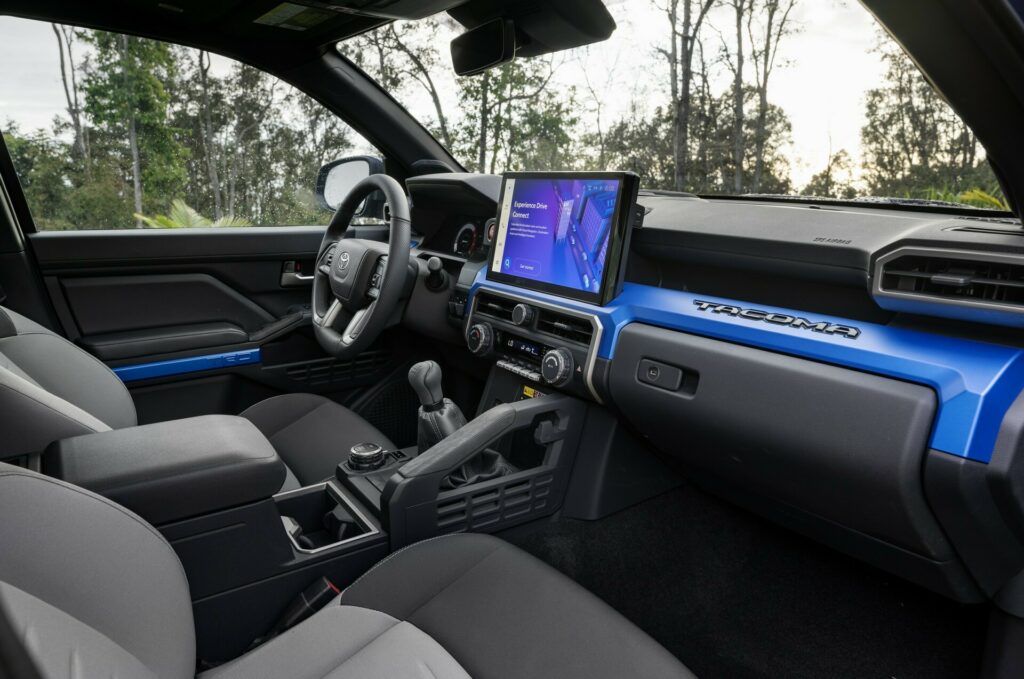
Putting technology aside, the Tacoma has a small shelf on the dash where the front seat passenger can stash their smartphone. Elsewhere, there are MOLLE panels on the center console and doors. Toyota also aimed to make the truck more cargo-friendly as there’s three times more storage space beneath the rear seats. The rear seatback also folds down to aid in hauling larger items.
Besides the practical touches, there are a few oddities including rubber grips throughout the cabin and a “hidden side pocket on the driver’s side dashboard.” The latter has a QR code that takes users to a website where they can learn to “design and 3D print their own accessories such as a lantern, multitool, or toolkit.”
Equipment details will be announced closer to launch, but the Tacoma Limited will come nicely equipped with a 12.3-inch digital instrument cluster, a 14-inch infotainment system, and a head-up display. The truck will also have heated and ventilated front seats, a digital rearview mirror, and a moonroof.
More interestingly, the Limited will have a ten speaker JBL audio system with a portable speaker. The latter is installed in the top of the dash, but it can be removed to bring the party outdoors. In Bluetooth speaker mode, it provides six hours of fun and it’s also beach friendly as the speaker can be submerged in up to three feet (914 mm) of water.
The Tacoma Goes Turbo, Offers Optional Hybrid Powertrain
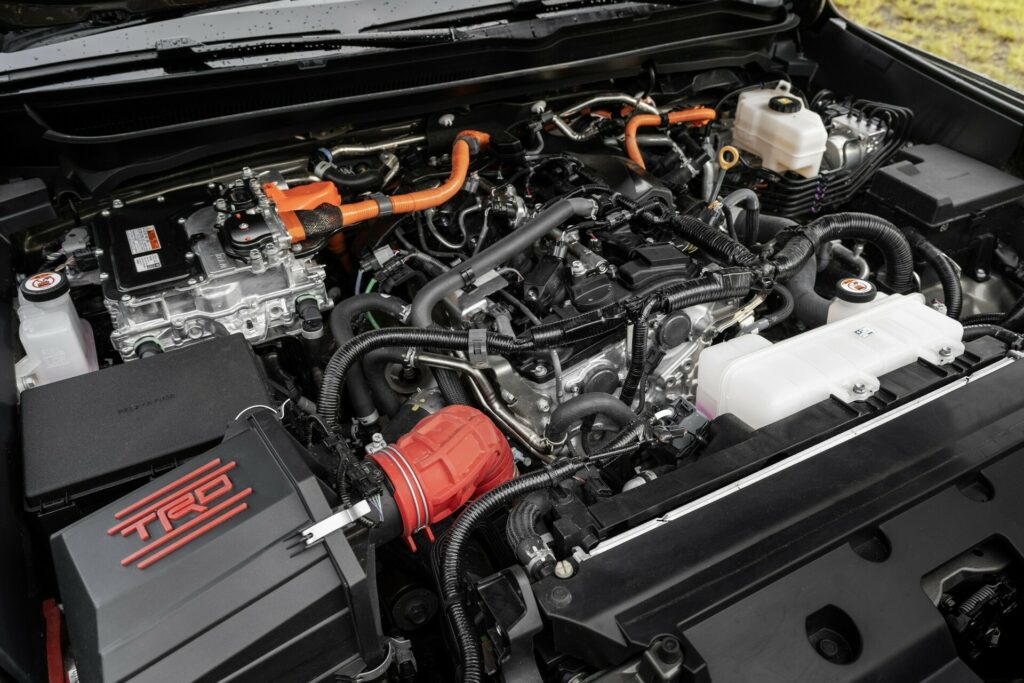
While the Tacoma is America’s best-selling mid-size truck, its 2.7-liter four-cylinder engine is a slow moving senior citizen with 159 hp (119 kW / 161 PS) and 180 lb-ft (244 Nm) of torque. That’s woefully inadequate, but thankfully the mill has reached retirement.
In its place is a new family of turbocharged 2.4-liter four-cylinder engines. The base powertrain is found exclusively on the entry-level SR, where it produces 228 hp (170 kW / 231 PS) and 243 lb-ft (329 Nm) of torque. That’s slightly less than the 237 hp (177 kW / 240 PS) and 259 lb-ft (351 Nm) you’ll find in the cheapest Colorado.
While the base engine is offered exclusively with an eight-speed automatic transmission, the mid-level 2.4-liter i-Force powertrain develops 270 hp (201 kW / 274 PS) and 310 lb-ft (420 Nm) of torque when paired to the available six-speed manual. Opting for the eight-speed automatic increases the output to 278 hp (207 kW / 282 PS) and 317 lb-ft (429 Nm).
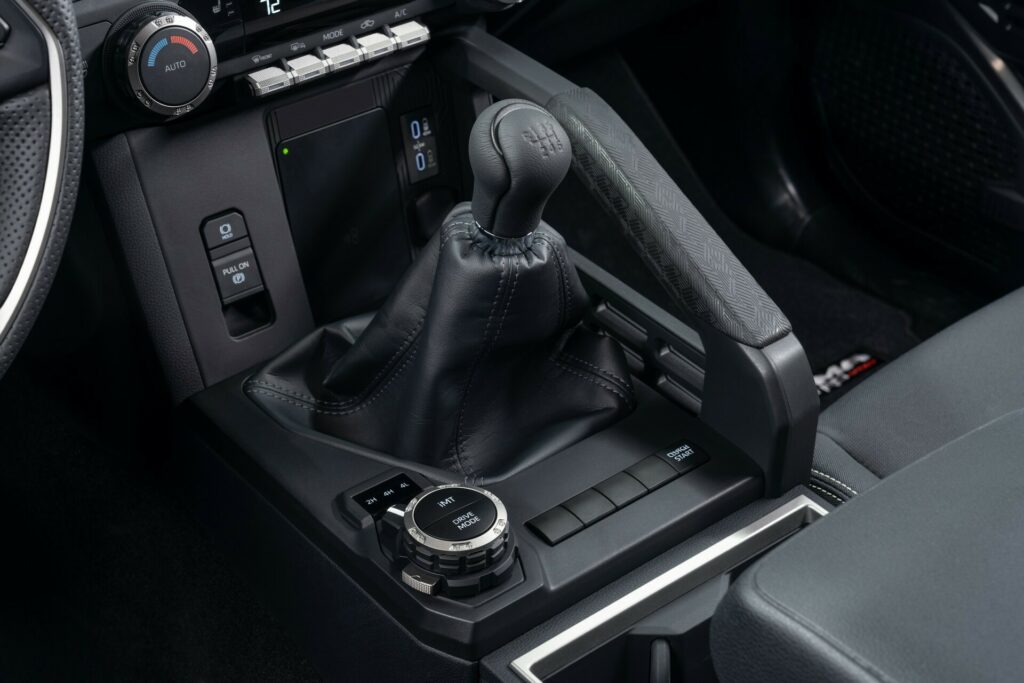
Before we get too far ahead of ourselves, the six-speed manual features automatic rev matching and anti-stall technology. The automatic also gets a nod for being all-new and featuring two extra cogs.
The big news is the Tacoma is going hybrid with an all-new i-Force Max powertrain. It consists of a turbocharged 2.4-liter four-cylinder engine, a 1.87 kWh nickel-metal hydride battery, and an electric motor that is integrated into the eight-speed automatic transmission.
Thanks to the joys of electrification, the powertrain develops an impressive 326 hp (243 kW / 331 PS) and 465 lb-ft (630 Nm) of torque. That’s a huge improvement over the old 3.5-liter V6 and it easily beats GM’s turbocharged 2.7-liter four-cylinder that maxes out at 310 hp (231 kW / 314 PS) and 430 lb-ft (582 Nm) of torque.
It also blows past the Ranger’s all-new 2.7-liter EcoBoost V6, which develops 315 hp (235 kW / 319 PS) and 400 lb-ft (542 Nm) of torque. However, the Ranger Raptor sports a class-leading 3.0-liter EcoBoost V6 with 405 hp (302 kW / 411 PS) and 430 lb-ft (582 Nm) of torque.
The i-Force Max powertrain will come standard on the Tacoma TRD Pro and Trailhunter. Customers can also get the engine on the TRD Sport, TRD Off-Road, and Limited.
Putting engines aside, the Tacoma will come standard with rear-wheel drive and a limited-slip differential. Opting for four-wheel drive rewards buyers with an electronically controlled two-speed transfer case, active traction control, and the aforementioned limited-slip differential. That being said, Limited models with the i-Force Max powertrain come equipped with a full-time four-wheel drive system and a center locking differential. Customers will also find an electronic locking rear differential on the TRD PreRunner, TRD Off-Road, TRD Pro, and Trailhunter.
A New Platform And Modern Driver Assistance Systems
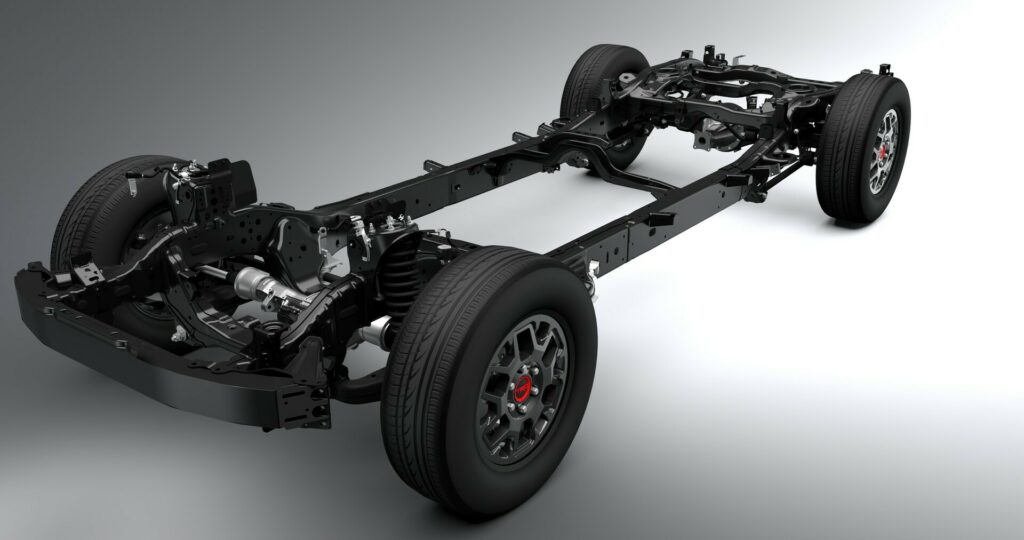
An all-new truck needs an all-new platform and the 2024 Tacoma uses the TNGA-F architecture, which also underpins the larger Tundra and Sequoia. It features a high-strength steel ladder frame with laser welds, strengthened crossmembers, and an all-new front crossmember for the steering box. The latter not only improves rigidity, but also promises to enhance steering input and dynamics.
While the SR, SR5 XtraCab, and TRD PreRunner have traditional rear leaf springs, higher-end trims have a multi-link coil suspension that promises to deliver improved handling and a more comfortable ride.
Toyota went on to say the suspension has been “tuned specifically to each grade” as the TRD Sport has sport-tuned shocks for a more responsive feel. In the case of the TRD Off-Road, it comes equipped with “monotube Bilstein remote reservoir shocks for extended wheel travel and greater heat dissipation.” The Limited trim, on the other hand, features an Adaptive Variable Suspension system that continuously adjusts damping based on road conditions.
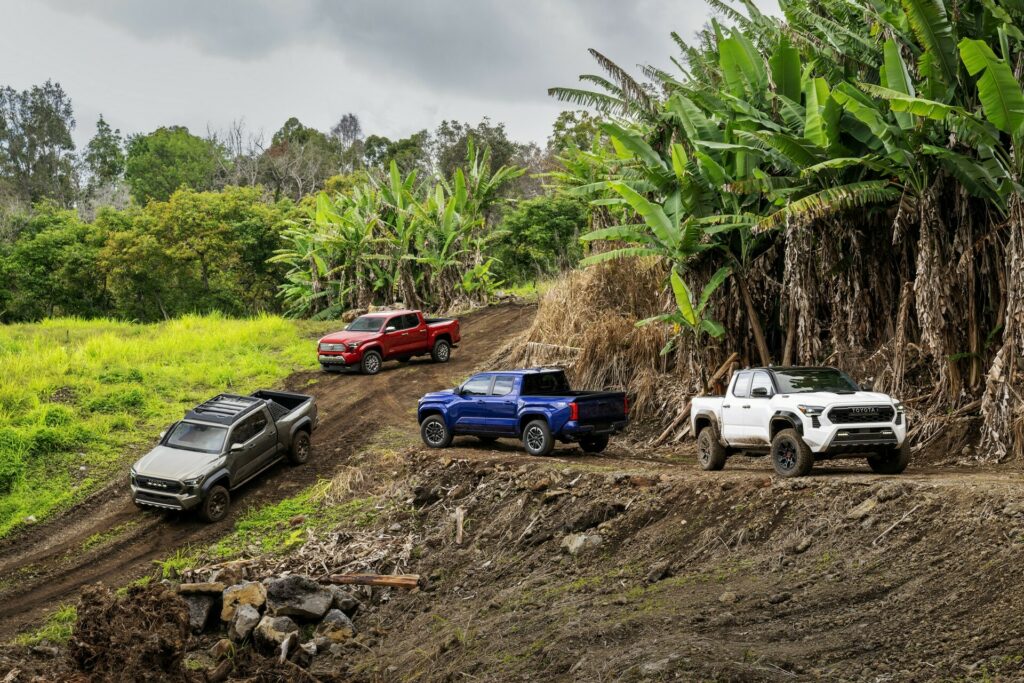
The Tacoma will come standard with four-wheel disc brakes as the drums have been banished to the 1980’s where they belong. The truck also adopts an electric power steering system, which allows for the “incorporation of additional safety and convenience features.”
When it comes time to venture off the beaten path, drivers will be happy to find a new front stabilizer disconnect. It’s available on off-road focused variants and disconnects the front stabilizer at the push of a button. Toyota says this improves articulation by 10 percent, compared to the old truck, and will even be compatible with certain lift kits.
On the topic of off-roading, the Tacoma features Downhill Assist Control, a Multi-Terrain Monitor, and a Multi-Terrain Select system that now functions in both 4WD-High and 4WD-Low. The CRAWL Control function has also been improved and is “significantly quieter.”
The 2024 Tacoma comes standard with the Toyota Safety Sense 3.0 suite of driver assistance systems and it brings a handful of new features to the truck. Highlights include Full-Speed Range Dynamic Radar Cruise Control (Adaptive Cruise Control), Lane Tracing Assist (Lane Centering), and a Pre-Collision System with Pedestrian Detection. There’s also Automatic High Beams, Road Sign Assist, and Proactive Driving Assist.
Tows Up To 6,500 Pounds
Trucks and towing go together like trees and the great outdoors, but unfortunately Toyota has only released a few details. That being said, certain variants with the i-Force engine and the eight-speed automatic transmission will have a towing capacity of up to 6,500 lbs (2,948 kg). Trucks with the i-Force Max powertrain will have a slightly lower rating of up to 6,000 lbs (2,722 kg).
To put those numbers into perspective, the 2024 Ford Ranger can tow up to 7,500 lbs (3,402 kg) while the Colorado tops out at 7,700 lbs (3,493 kg). Even the Frontier is more capable as it maxes out at 6,720 lbs (3,048 kg).
While it might not have bragging rights, the Tacoma offers an assortment of towing technologies including a trailer brake controller and Trailer Back Up Guidance. The model also offers a Straight Path Assist system, which enables the truck and trailer to be easily reversed in a straight line.
Getting back to capability, the Tacoma TRD Off-Road will have a maximum payload capacity of 1,709 lbs (775 kg). Toyota was mum on the other variants, but the Ranger is more capable at 1,805 lbs (819 kg).
Arrives Later This Year To Battle Ford And Chevy
The 2024 Toyota Tacoma will go on sale later this year, although you’ll have to wait until next spring to get a truck with the i-Force Max powertrain.
Pricing will be announced closer to launch, but the current Tacoma starts at $28,250 before a $1,335 destination charge. We wouldn’t be surprised to see prices climb, but hopefully Toyota can keep any potential increases in check as the mid-size truck segment is shaping up to be the one to watch.




